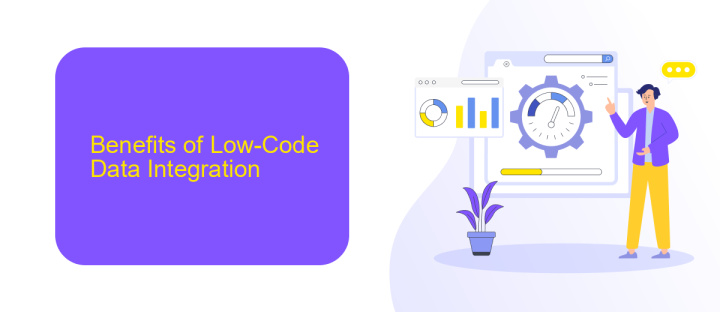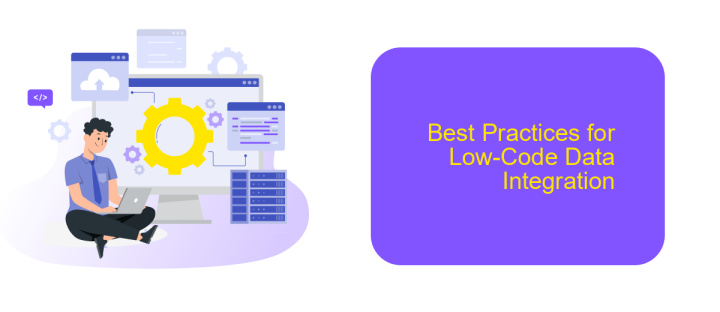Low-code Data Integration
Low-code data integration is revolutionizing how businesses handle their data processes. By enabling users to connect, transform, and manage data with minimal coding, this approach significantly reduces development time and costs. It empowers non-technical users to participate in data integration tasks, fostering greater collaboration and efficiency within organizations. Discover the benefits and key features of low-code data integration in this article.
Introduction to Low-Code Data Integration
Low-code data integration is revolutionizing the way businesses handle data by simplifying the integration process. Unlike traditional coding methods, low-code platforms allow users to connect various data sources with minimal coding knowledge. This approach significantly reduces the time and cost associated with data integration, making it accessible to a broader range of users.
- Ease of Use: Drag-and-drop interfaces simplify the integration process.
- Cost-Effective: Reduces the need for specialized coding skills.
- Flexibility: Easily adapt to changing business needs.
- Speed: Rapid deployment of data integration solutions.
- Scalability: Seamlessly scale as your business grows.
Platforms like ApiX-Drive exemplify the benefits of low-code data integration. ApiX-Drive enables users to connect various applications and automate workflows without extensive coding. By leveraging such tools, businesses can streamline their data processes, improve efficiency, and focus on strategic initiatives rather than technical complexities.
Benefits of Low-Code Data Integration

Low-code data integration offers numerous benefits, significantly simplifying the process of connecting various data sources. One of the primary advantages is the reduction in development time and costs. By utilizing visual interfaces and pre-built connectors, businesses can quickly set up data integrations without extensive coding knowledge. This accelerates project timelines and reduces the need for specialized IT resources, allowing teams to focus on more strategic tasks.
Another significant benefit is the enhanced flexibility and scalability it offers. Low-code platforms like ApiX-Drive enable seamless integration of multiple applications and data sources, ensuring that as your business grows, your data integration solutions can easily scale with it. Additionally, these platforms often come with robust support and regular updates, ensuring that your integrations remain efficient and up-to-date. This not only improves operational efficiency but also enhances data accuracy and consistency across the organization.
Challenges of Low-Code Data Integration

While low-code data integration offers numerous advantages, it also presents several challenges that organizations must address to fully leverage its potential. One primary concern is the limited customization options, which may not meet the specific needs of complex data workflows.
- Scalability Issues: Low-code platforms might struggle to handle large-scale data integration tasks, leading to performance bottlenecks.
- Limited Flexibility: Pre-built connectors and templates can be restrictive, making it difficult to implement unique business logic.
- Security Concerns: Ensuring data privacy and compliance can be challenging, especially when integrating with multiple third-party services.
- Dependency on Vendors: Organizations may become overly reliant on the low-code platform provider for updates and support, which can be risky if the vendor changes their service offerings or goes out of business.
Despite these challenges, services like ApiX-Drive can help mitigate some of these issues by offering a wide range of integration capabilities and robust support. However, careful planning and consideration are essential to ensure that low-code data integration solutions align with an organization's long-term goals and requirements.
Best Practices for Low-Code Data Integration

Low-code data integration streamlines the process of connecting disparate data sources, making it accessible even to non-technical users. To ensure successful integration, it's essential to follow best practices that enhance efficiency and reliability. Begin by thoroughly understanding your data requirements and the specific goals of your integration project.
Next, choose a robust low-code platform that supports a wide range of data sources and integration capabilities. ApiX-Drive, for instance, offers a user-friendly interface and extensive support for various applications, making it an excellent choice for seamless data integration.
- Ensure data quality by validating and cleansing data before integration.
- Regularly monitor and update integrations to adapt to changing data structures.
- Implement strong security measures to protect sensitive data during transfer.
- Document integration processes and maintain clear communication among team members.
By adhering to these best practices, organizations can maximize the benefits of low-code data integration, ensuring that data flows smoothly and securely across systems. Leveraging platforms like ApiX-Drive can further simplify the process, enabling efficient and effective data management.


Future of Low-Code Data Integration
The future of low-code data integration is poised for significant advancements, driven by the increasing demand for agile and efficient data management solutions. As businesses continue to generate vast amounts of data, the need for seamless integration across various platforms becomes critical. Low-code platforms will evolve to offer more sophisticated tools, enabling even non-technical users to create complex workflows and data pipelines with ease. This democratization of data integration will empower organizations to respond faster to market changes and make data-driven decisions more effectively.
Moreover, services like ApiX-Drive will play a crucial role in shaping this future. By providing user-friendly interfaces and pre-built connectors, ApiX-Drive simplifies the integration process, allowing businesses to connect disparate systems without extensive coding knowledge. As these platforms continue to innovate, we can expect to see more automated features, enhanced security measures, and greater scalability options. This will not only reduce the time and cost associated with data integration but also ensure that businesses can maintain a competitive edge in an increasingly data-centric world.
FAQ
What is low-code data integration?
How does low-code data integration benefit businesses?
Can I use low-code data integration for real-time data syncing?
What types of data sources can be integrated using low-code platforms?
How secure is low-code data integration?
Time is the most valuable resource in today's business realities. By eliminating the routine from work processes, you will get more opportunities to implement the most daring plans and ideas. Choose – you can continue to waste time, money and nerves on inefficient solutions, or you can use ApiX-Drive, automating work processes and achieving results with minimal investment of money, effort and human resources.

